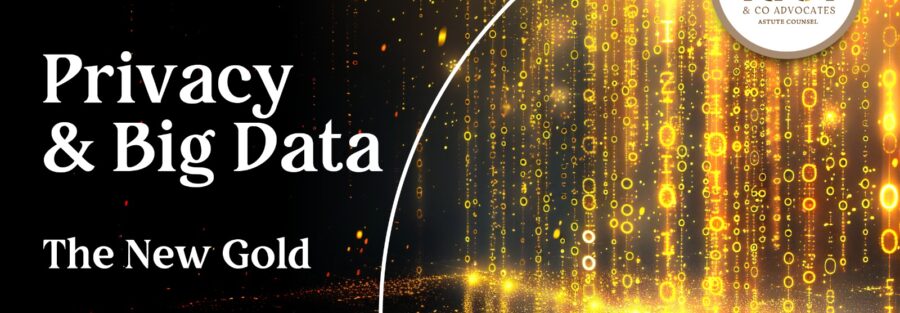Introduction
Data is essential in today’s world. Mathematician Clive Humby said, “Data is the new oil.” Like oil, data is valuable, but it must be refined to be useful. Nowadays, personal data is collected on a large scale through social media and e-commerce sites. This leads to the rapid growth of what we call ‘big data.’
As data sizes grow, so do privacy concerns. In the past, personal privacy was mainly a physical issue. Now, with big data, we face new digital privacy questions. We need to think about how we collect, protect, and use sensitive information. This has led to the idea of ‘big data privacy,’ which aims to find a balance between innovation and privacy.
This article will assess privacy issues that arise in the age of big data. First, it will introduce the concepts of big data and data privacy. Then, it will discuss the privacy risks that occur at each stage of the data lifecycle and suggest ways to reduce these risks. Finally, the article will look at future trends in tackling privacy challenges.
1. Big Data
Big data refers to large and complex datasets that are hard to process with traditional tools. It comes from various sources like social media, healthcare records, transactions, and sensors.
Big data includes information about consumer behavior, locations, health, and online activities. Its value lies in its ability to provide insights, predict trends, improve services, and enhance decision-making.
Big data has several key characteristics:
a) Volume: It involves a vast amount of data that exceeds what traditional storage and processing can handle.
b) Velocity: Data is generated and processed quickly, often in real-time.
c) Variety: Data comes in many formats, including structured, semi-structured, and unstructured.
d) Veracity: This refers to the accuracy and reliability of data. With so much data from different sources, errors can occur.
e) Variability: Data can change over time or context, leading to inconsistencies.
f) Value: Big data can provide useful insights for better decision-making.
Big data is used in many industries:
a) Banking and Finance: Institutions analyze customer transactions to find potential fraud.
b) Retail and Marketing: Companies track consumer behavior to offer personalized product recommendations.
c) Transportation: Data helps companies find the best delivery routes using traffic and weather information.
d) Agriculture: Farmers use data from sensors and satellites to analyze soil quality and crop health.
e) Education: Data enables tailored learning experiences and helps educators track student progress.
f) Media and Entertainment: Streaming platforms analyze viewing habits to recommend shows or movies.
Big data offers benefits like better decision-making, improved customer engagement, and higher efficiency. However, it also raises important concerns about privacy, cybersecurity, data quality, and costs. This article focuses on privacy issues that arise as we navigate the age of big data.
2. Data Privacy And Its Importance
Data privacy is about handling, storing, and protecting personal information to ensure it is not accessed or misused by unauthorized people. This idea is based on the principle that individuals should control their personal data. It includes many types of information, such as:
a) Personally identifiable information (e.g., names, social security numbers, addresses, phone numbers, and birth dates),
b) Financial information (e.g., bank account details, credit card numbers, and transaction histories),
c) Health information (e.g., medical records, diagnoses, and prescriptions),
d) Sensitive personal information (e.g., religious beliefs, political affiliations, and criminal records),
e) Online activity data (e.g., IP addresses, browsing histories, cookies, and geolocation data).
Protecting this data is crucial for maintaining individual privacy, safeguarding sensitive information, building trust between users and organizations, and encouraging responsible data use.
To support good data management, the European Union’s General Data Protection Regulation (GDPR) and the Kenyan Data Protection Act outline several key principles:
a) Lawfulness, fairness, and transparency: Personal data must be processed legally, fairly, and transparently, including getting proper consent and informing people how their data will be used.
b) Purpose limitation: Data must be collected and used only for a clear, legitimate purpose.
c) Data minimization: Personal data should be relevant and limited to what is necessary for its intended use.
d) Accuracy: Personal data must be correct and kept up-to-date. Incorrect data should be corrected or deleted quickly.
e) Storage limitation: Personal data should be kept only as long as necessary for its purpose.
f) Integrity and confidentiality: Personal data must be handled securely, protecting it from unauthorized access, loss, or damage.
g) Accountability: The data controller must ensure compliance with these principles and put measures in place to achieve this.
As large amounts of personal data are often involved in big data, standard privacy measures struggle to keep up. Thus, big data privacy has arisen to protect this information throughout its lifecycle. However, poor management of big data can lead to serious privacy risks at different stages of the data lifecycle.
3. Privacy Risks In The Data Lifecycle and Mitigation Strategies
The data lifecycle includes the stages that data goes through from its creation to its deletion. Below are the key stages of the data lifecycle and some privacy risks that can arise at each stage:
a) Creation and Collection
This is where data is generated and collected from sources like user interactions, sensors, or transactions.
At this stage, some privacy risks include:
i) Lack of Consent: Collecting personal data without proper consent can violate an individual’s right to control their own information.
ii) Lack of Transparency: Data collected without clear information about its intended use can lead to misuse.
iii) Collection of Unnecessary Data: Gathering more data than needed can expose sensitive information unnecessarily.
iv) Sale of Data to Third Parties: Selling collected data to third parties without the individual’s knowledge can lead to misuse of personal data.
In order to mitigate these risks, the following strategies are recommended:
i) Use of consent forms that provide explicit details about data collection, the intended use of that data, and the sharing of data with third parties.
ii) Provision of regular updates to data subjects about any changes in the use of data.
iii) Regular validation of the necessity of collected data to ensure that it aligns with the intended purpose.
iv) Implementation of data minimization practices to only collect data that is necessary for the specific purpose communicated.
b) Data Processing
After you collect data, you process it through tasks like organizing, compressing, and encrypting so that it is usable.
Privacy Risks During Processing:
- Weak Security Measures: Poor security may allow unauthorized access to sensitive information, risking exposure of personal details.
- Improper Anonymization: If data is not properly anonymized, it may lead to risks of re-identifying individuals.
- Algorithmic Bias: Data processing algorithms can be biased if they rely on incomplete data, potentially resulting in unfair decisions.
To Reduce These Risks:
- Monitor user behavior continuously to spot suspicious activity quickly.
- Encrypt data to protect it from unauthorized access.
- Use role-based access control or multi-factor authentication to ensure only authorized people can access sensitive information.
- Apply advanced anonymization methods, like differential privacy or k-anonymity, to remove any personal identifiers.
- Regularly audit data for accuracy, security, and anonymity.
- Use diverse and representative datasets to train your data processing algorithms.
c) Data Storage
Once collected, store data securely, whether on hard drives, databases, cloud systems, or servers, for future use.
Privacy Risks During Storage:
- User Access Controls: Weak access controls might let unauthorized people view sensitive information, risking exposure.
- Security Measures: Poor security may increase vulnerability to cyberattacks and data leaks.
- Unintentional Duplication: Duplicating personal data in multiple locations may increase the chances of data breaches.
To reduce these risks, consider the following strategies:
i) Monitor user behavior continuously to quickly spot suspicious activities.
ii) Encrypt data to keep it safe from unauthorized access.
iii) Use role-based access control or multi-factor authentication to ensure only authorized personnel can access sensitive data.
iv) Apply advanced methods to anonymize data, like differential privacy or k-anonymity, to remove identifiers that can link data to specific individuals.
v) Regularly audit data to ensure it stays accurate, unbiased, secure, and anonymous.
vi) Use a variety of representative datasets to train data processing algorithms.
d) Analysis
Data is analysed using methods like data mining, statistical modelling, and artificial intelligence to gain meaningful insights.
At this stage, some privacy risks may include:
i) Advanced analytics may reveal patterns that lead to intrusive profiling or discrimination.
ii) Data analysis may introduce or perpetuate existing biases if the data is unrepresentative or analyzed without fairness safeguards, leading to unfair outcomes.
To reduce these risks, you should:
i) Use explainable artificial intelligence techniques to understand how models make decisions and find potential biases.
ii) Conduct regular audits to detect and address biases or discriminatory practices in analysis results.
iii) Ensure datasets are diverse and truly reflect the population being analyzed.
e) Usage
Data is accessed and used to support activities in the organization, such as reporting or decision-making.
At this stage, some privacy risks may include:
i) Unauthorized use of data for purposes not originally intended (like targeted advertising), which takes away the data subject’s control over their personal information.
ii) Misuse of data for profiling without the data subject’s consent, leading to discrimination.
iii) Unintended sharing of personal information with unauthorized parties through emails or reports, exposing sensitive data.
To reduce these risks, implement these strategies:
i) Develop clear policies on how data can be used.
ii) Train employees on data protection principles.
iii) Limit access to sensitive information using role-based access control or multi-factor authentication.
f) Archival/Retention
Older data that is no longer actively used may be archived for legal compliance or future reference for a specified period.
At this stage, some privacy risks may include:
i) Over-retention of data may violate an individual’s right to erasure and increase the chances of using outdated or inaccurate data in decision-making or reporting.
ii) Weak security for archived data can make it vulnerable to cyberattacks, breaches, or unauthorized access.
To reduce risks related to data handling, we recommend the following strategies:
- Create and enforce clear policies that state how long different types of data should be kept.
- Conduct regular audits to find and remove outdated or inaccurate data.
- Encrypt archived data to keep it safe from unauthorized access.
- Continuously monitor data storage systems to spot and fix any security weaknesses.
g) Disposal
This is the last step when data is no longer needed or has reached its retention period. It should be securely disposed of to prevent unauthorized access or misuse.
During this step, some privacy risks include:
- Deletion Methods: Using incomplete deletion methods may leave behind data that could be recovered by unauthorized people or cybercriminals.
- Recycling or Reselling Devices with Personal Data: If devices containing personal data are recycled or sold without proper erasure, it can lead to unauthorized access, data breaches, and misuse by new users.
To minimize these risks, we recommend:
- Using effective erasure methods (like cryptographic erasure) to make sure destroyed data cannot be retrieved.
- Employing certified data destruction services that promise secure erasure and provide proof of the process.
- Properly erasing all personal data on devices before recycling or reselling them.
CONCLUSION
In today’s world of big data, a lot of personal information is collected, processed, and analyzed. As a result, privacy has become very important. To tackle these concerns, we need a strong team effort that focuses on transparency, accountability, and integrity. This will help everyone benefit from the potential of big data while protecting individual privacy.




